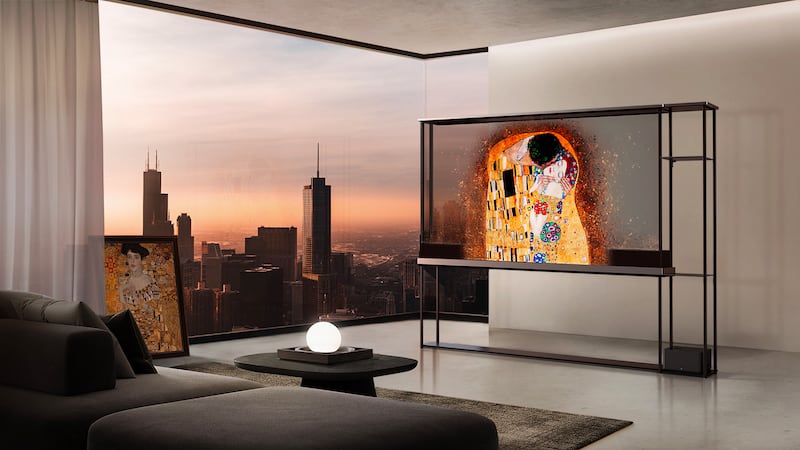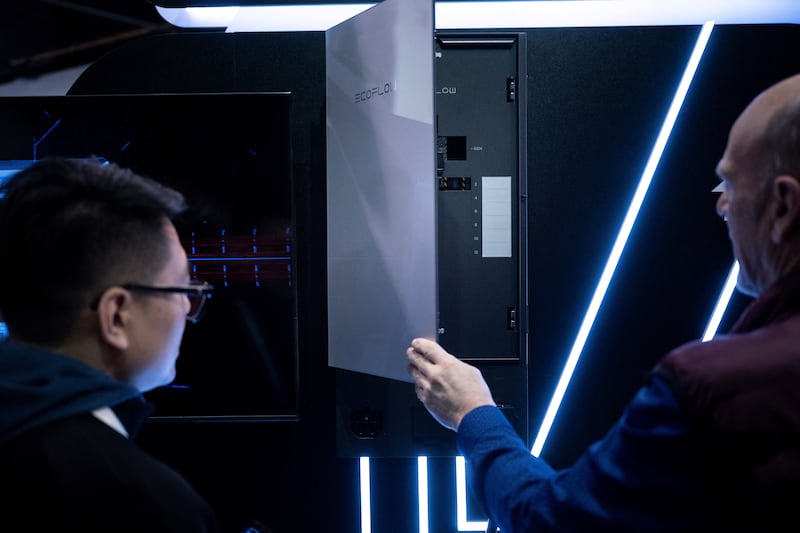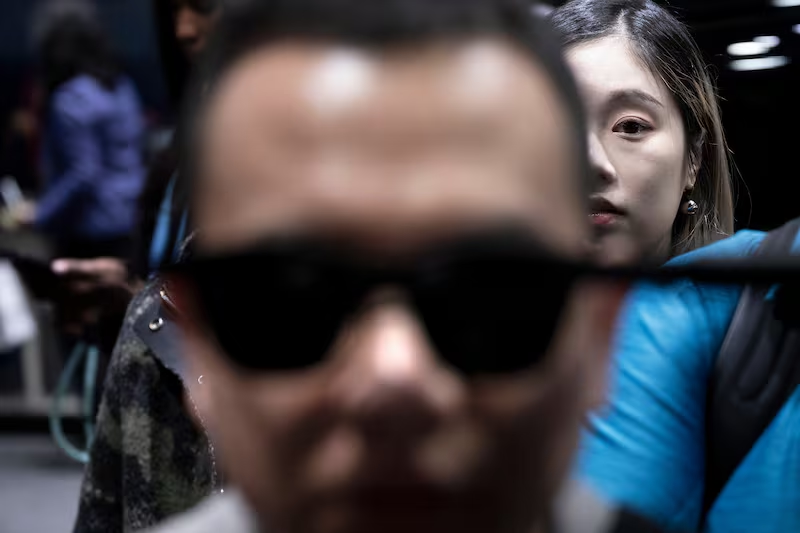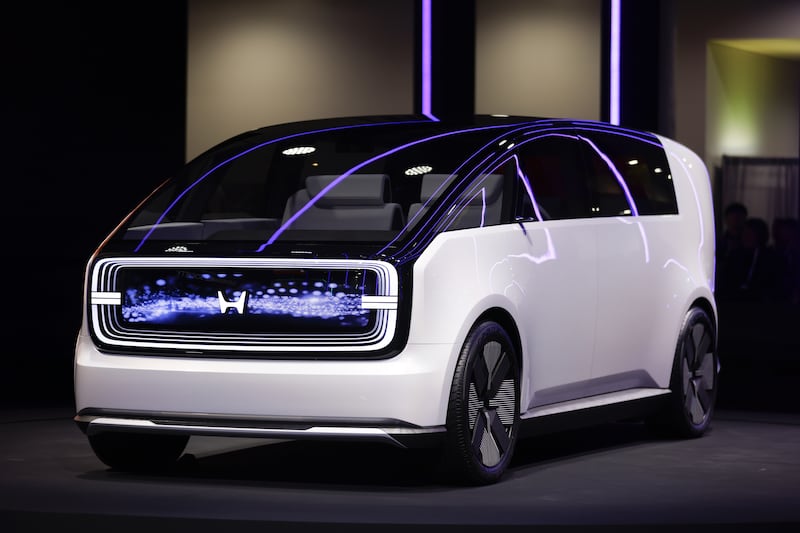Artificial intelligence was the main topic at this year’s CES in Las Vegas.
After a year when generative AI hit the headlines, the expectation was that the chatty artificial intelligence would cross over into the technology for the coming year.
But while AI was front and centre at the show, generative AI, despite the hype, is still at a very early stage. Too early, it seemed, for it to have filtered through in any meaningful way to the mainstream and the technology that was on show at CES.
“We’re still trying to get it all to work,” said Jay Goldberg, chief executive of D2D Advisory. “You need the silicon and the software, and it’s only been a year since ChatGPT launched – people are still getting on board.”
READ MORE
There were flashes of it. Volkswagen showed off a built-in assistant for its cars, a piece of ChatGPT-powered software in partnership with US software developer Cerence. The software, set to hit cars later this year, will allow drivers to talk to the car to do everything from adjusting temperature to finding directions to local landmarks.
That will make Volkswagen among the first volume manufacturer to make the technology a standard feature in its compact cars.
General Motors is working on a virtual personal assistant using AI models behind ChatGPT, and Mercedes-Benz is also looking at how ChatGPT could help drivers interact more naturally with their vehicles’ in-car systems, with a beta programme that will explore the possibilities of the technology.
But experts said it may be some time before the more widespread applications of generative AI hit the market in a big way. Accenture analyst Syed Alam said it may be 2025 before the glut of gadgets containing generative AI would be seen on the market.
“I wouldn’t be surprised if we see hand-held devices that are doing generative AI, and maybe even offline,” Alam said.
AI was visible in a more traditional form. Smarter technology is coming to homes and offices all over the world, from fridges and vacuums to the pillows underneath your head.
Samsung’s AI-powered smart fridge, the Bespoke Flex Fridge, will recognise food items inside it, and can come up with recipes based on the contents of your fridge. Capable of recognising up to 33 different food items, it will also help you reduce food waste by notifying you when the best before and use by dates are set to expire.
The fridge comes with the AI Family Hub+, part of the company’s plan to ramp up the use of AI technology in its home products to help make consumers’ lives easier. Also set for an AI upgrade is its washer-dryer, the AI Laundry Combo, which will learn user habits and personalise washing and drying cycles automatically. A new Bespoke Jet Bot Combo robot vacuum cleaner will also detect stains, distinguish between different floor types and even detect the different carpet lengths to improve its cleaning.
Swiss start-up Flappie has developed an AI-powered cat flap that can stop the feline members of the household from bringing home “gifts” of the winged or rodent kind
“With the emergence of artificial intelligence, smarter, better experiences will redefine how we live,” Samsung’s JH Han said. “Samsung’s broad portfolio of powerful devices, along with the pursuit of open collaboration, will help bring AI and hyperconnectivity to all.”
AI could also help keep your house critter-free. Swiss start-up Flappie has developed an AI-powered cat flap that can stop the feline members of the household from bringing home “gifts” of the winged or rodent kind. The camera on the cat flap will identify prey in the cat’s mouth, blocking it from entering until it drops it. Set to ship in the spring, the device will cost 449 Swiss francs.
But AI wasn’t the only thing on people’s minds this year.
Transparent TVs

TV technology has been a staple of CES for several years, from 3D TVs to the latest screen technology. This year though, it was as much about what you couldn’t see as what you could. TVs are going transparent, meaning that in the future, your living room may no longer be dominated by a black screen on the wall.
Samsung debuted its transparent microLED panels on the show floor, but things are still at an early stage, with the South Korean tech company only showing off a prototype of the cutting-edge TV.
But rival LG was a step ahead. Its transparent Signature OLED T will go on sale later in the year, offering a 77-inch transparent TV that looks more like a sheet of glass than a TV set. Push a button and it raises a black film to give you decent backdrop for your TV viewing. One thing that has been missing so far is price: the LG TV is expected to cost a significant wad of cash, with prices in the thousands.
Samsung, meanwhile, has gone the AI route with a 8K TV that will upscale lower resolution content automatically to take advantage of the high-end screen. The Neo QLED 8K QN900D will also use AI to improve sound.
Greener tech

Sustainability has been on everyone’s minds for the past couple of years, with an increasing focus on green technology. This year was no different.
While Hyundai was pushing the advantages of hydrogen-powered vehicles, the electrification of devices that previously depended on fossil fuels was everywhere, from electric cars to barbecues.
Take the latter, which mainly exist right now as either carbon-based charcoal grills or gas-powered grills. But Current Backyard is betting on electric grills as the future. Not only will the grill eliminate the carbon emissions of the traditional grill, it’s also more convenient. And you get additional benefits such as a wifi connection and alerts through the accompanying app.
Start-up EcoFlow Technology showcased its Delta Pro Ultra battery that could run your whole home, a stackable system that can also be hooked up to the company’s smart electrical panel.
Mixed reality and spatial computing

The Apple Vision Pro may have stolen a march on CES, going on sale in the US from tomorrow, but spatial computing was still a hot topic for CES. Sony is working on its own mixed-reality headset, which is aimed at content creation. Partnering with Siemens, the Sony system is likely to target engineering design companies, and come with a suitably focused price tag.
The consumer focused Xreal smart sunglasses, meanwhile, are a pricey but more affordable option for consumers that include displays and speakers, with 3D cameras that will enable hand tracking. The Xreal glasses will need a third-party device – your phone or laptop – to work, so it is not quite as self-contained as Apple’s headset – but it is significantly cheaper.
Car technology

Car makers have become an increasingly visible presence at CES in recent years. Last year, BMW showed off its new concept car and the future of its in-car systems with the iVision Dee.
This year, Honda showed up with concept cars to show off the 0 Series electric cars it plans to start selling in 2026, and a concept version of the Ioniq 5, the Mobion, that can spin its wheels nine degrees to help with parallel parking.
Kia showcased a new modular electric platform, dubbed Platform Beyond Vehicle, a concept with a fixed driving compartment and three different lengths so your van can become a people carrier and so on.
Speaking of larger vehicles, Pebble showed up to CES with its electrified RV, which it is hoping will appeal to road warriors. – Additional reporting: Bloomberg, Reuters





















